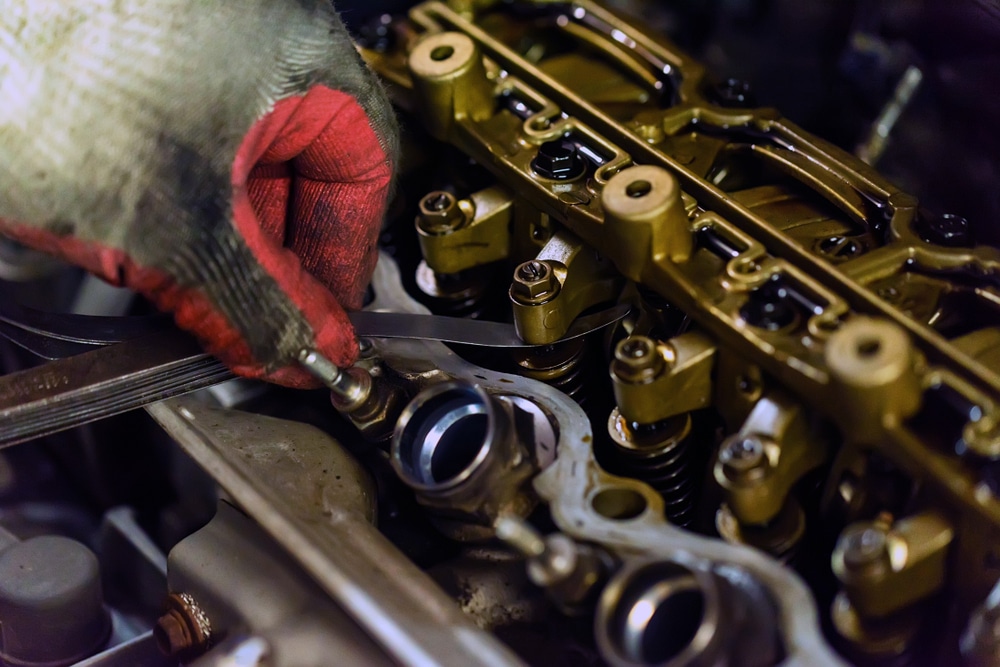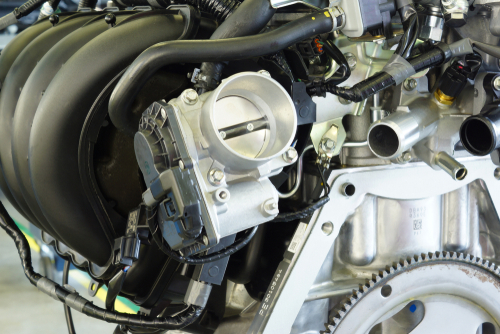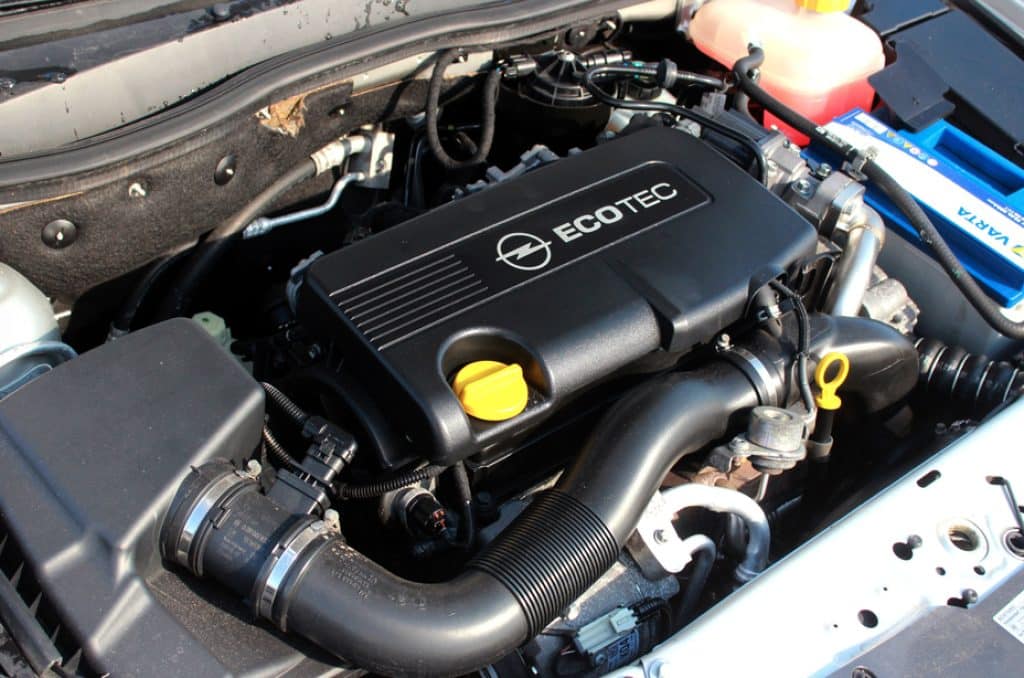Is your car acting up? You might be dealing with a P0020 code. This pesky diagnostic trouble code relates to the camshaft position actuator circuit in Bank 2 of your engine. Don’t worry if that sounds like gibberish – we’ll break it down for you.

The P0020 code indicates a problem with the variable valve timing system, specifically the intake camshaft actuator on the second bank of cylinders. This little gizmo is responsible for adjusting the timing of your engine’s valves, which is crucial for optimal performance and fuel efficiency.
When it’s not working right, your car might start feeling a bit under the weather.
You might notice your engine running rough, decreased fuel economy, or even that dreaded Check Engine light glowing on your dashboard.
But fear not! With a bit of know-how and some elbow grease (or a trusted mechanic), you can get to the bottom of this issue and have your ride purring like a kitten again.
Key Takeaways
- P0020 relates to a malfunction in the camshaft position actuator circuit for Bank 2
- Symptoms can include rough idling, decreased fuel efficiency, and illuminated Check Engine light
- Proper diagnosis and timely repair are essential to maintain optimal engine performance and prevent further damage
Understanding the P0020 Code
The P0020 code is a pesky little gremlin that can leave you scratching your head. Don’t worry though, we’ll break it down so you can understand what’s going on under your hood.
The Role of the Camshaft Position Actuator
Your camshaft position actuator is like the conductor of your engine’s orchestra. It tells the intake valves when to open and close, making sure your engine runs smoothly.
When it’s working right, you’ve got a symphony of power. When it’s not, well, that’s where P0020 comes in.
This little gadget is part of your variable valve timing system. It’s constantly adjusting to give you the best performance and fuel economy. Pretty nifty, right?
But when the Engine Control Module (ECM) can’t communicate with it properly, that’s when you’ll see this code pop up.
What Does ‘Bank 2’ Mean?
Now, you might be wondering about this ‘Bank 2’ business. It’s not a place to store your money, that’s for sure! In the world of engines, banks refer to different sides of the engine.
Bank 2 is typically the side of the engine that doesn’t have cylinder #1. In V-shaped engines, it’s usually the passenger side. For inline engines, well, there is no Bank 2 – they’re all one happy family on Bank 1.
When your OBD2 system throws a P0020 code, it’s telling you there’s an issue with the camshaft position actuator circuit on Bank 2. It’s like your engine is trying to conduct with one hand tied behind its back!
Symptoms of a P0020 Code

When your car throws a P0020 code, you might notice some telltale signs. Your trusty vehicle could start acting up in ways that’ll have you scratching your head and reaching for your wallet.
Check Engine Light and What It Suggests
You know that pesky little light on your dashboard? Well, it’s about to become your new best friend.
When the P0020 code pops up, your Check Engine Light will illuminate. It’s like your car’s way of waving a red flag, saying, “Hey buddy, something’s not quite right over here!”
But don’t panic just yet. This light doesn’t always mean impending doom. It’s just your vehicle’s way of telling you it’s detected an issue with the camshaft position actuator circuit on Bank 2. Think of it as your car’s way of asking for a little TLC.
Engine Behavior and Performance Issues
Now, onto the fun part – how your car might start behaving like a toddler throwing a tantrum.
You might notice your engine running a bit rough, especially when idling. It’s like your car’s developed a case of the hiccups.
Your once smooth ride might start feeling more like a bucking bronco. You could experience misfires, making your car jerk like it’s trying to dance the cha-cha.
And don’t be surprised if your fuel efficiency takes a nosedive. Suddenly, your wallet-friendly commuter might start guzzling gas like there’s no tomorrow.
Acceleration? It might become as sluggish as you feel on a Monday morning. Your car could lose some of its get-up-and-go, leaving you feeling like you’re driving through molasses.
Troubleshooting the P0020 Code

Got a P0020 code lighting up your dashboard? Don’t panic! With a bit of know-how and some elbow grease, you can tackle this pesky camshaft position actuator issue.
Let’s dive into the nitty-gritty of diagnosing and fixing this problem.
Conducting a Diagnostic Scan
First things first, grab your trusty OBD2 scanner. This little gadget is your best friend when it comes to decoding what’s going on under the hood. Plug it in and let it work its magic.
Once you’ve got the results, don’t just clear the code and call it a day. That’s like putting a band-aid on a broken arm!
Instead, take note of any other codes that might be hanging out with P0020. They could be distant cousins, all part of the same family reunion of engine troubles.
Remember, your scanner is like a detective’s magnifying glass. Use it to gather clues, not to sweep them under the rug!
Inspecting the Actuator Circuit and Wiring
Now, it’s time to play electrician. But don’t worry, you won’t need a degree for this!
Start by giving your intake camshaft position actuator a once-over. Look for any signs of damage or wear. It’s like checking your favorite jeans for holes before a big date.
Next, grab your multimeter and check the continuity of the wiring. It’s like following a treasure map, but instead of X marking the spot, you’re looking for any breaks in the electrical path.
Don’t forget to inspect the connectors too. They might look fine, but corrosion can be sneaky.
Lastly, give the oil control valve a good look. If it’s clogged, your camshaft won’t be doing the happy dance it’s supposed to. A clean valve is a happy valve!
Common Causes and Repairs

When your engine throws a P0020 code, it’s like your car is telling you it’s got a headache. Let’s dive into what might be causing this automotive migraine and how to make it feel better.
Identifying Common Culprits
Your camshaft position actuator could be the troublemaker here. It’s like the conductor of your engine’s orchestra, and when it’s out of tune, everything sounds off.
A faulty solenoid might be the culprit too. Think of it as the bouncer at the engine’s exclusive oil club – when it’s not doing its job, things get messy.
Don’t forget about the wiring! Those little copper strings can fray or break, leaving your actuator high and dry without its much-needed electricity.
Lastly, your timing chain could be stretched out like an old rubber band. When it’s not keeping time properly, your engine’s rhythm goes haywire.
Professional Repair vs. DIY
You might be tempted to channel your inner mechanic, but diagnosing a P0020 can be trickier than a game of automotive Twister.
A professional mechanic has the tools and know-how to pinpoint the issue faster than you can say “camshaft timing.”
They’ll likely start with a thorough scan and may need to dig deeper into your engine’s guts.
The cost to diagnose can range from $75 to $150, depending on your ride and location. Fixing it? That’s another story.
You could be looking at anywhere from $200 to $1000+, especially if it’s a camshaft actuator replacement.
If you’re feeling brave, you can try some basic checks. Look for obvious wiring damage or listen for unusual engine noises. But remember, one wrong move and you might turn a small headache into a full-blown migraine for your car.
Implications for Vehicle Health
Ignoring that P0020 code could leave your wallet feeling lighter and your car gasping for air. Let’s dive into why you shouldn’t hit the snooze button on this pesky problem.
The Importance of Timely Repairs
You know that feeling when you’re running late and your coffee machine decides to throw a fit? That’s your car with a P0020 code.
Your engine control module is frantically trying to adjust timing, but Bank 2 isn’t getting the memo.
Imagine trying to conduct an orchestra with one arm tied behind your back. That’s what your engine’s dealing with. Your fuel efficiency takes a nosedive faster than a seagull spotting a dropped sandwich.
Don’t be surprised if your check engine light starts throwing a disco party on your dashboard.
Fix it promptly, and you’ll save yourself from a world of hurt (and a much bigger repair bill).
Long-Term Effects on Engine and Emissions
Let that P0020 code linger, and you’re in for a wild ride. Your engine’s variable valve timing system will be working overtime, like a hamster on a wheel going nowhere fast.
Over time, your engine components will wear unevenly. It’s like wearing one platform shoe and one flip-flop – you’re heading for a stumble.
Your emissions will go haywire, potentially failing those pesky smog tests.
Your fuel economy? It’ll plummet faster than a lead balloon. You’ll be on a first-name basis with every gas station attendant in town.
Fix it now, and your car (and the environment) will thank you. Ignore it, and you might as well start saving for a new engine. The choice is yours, but I think we both know which option doesn’t end in tears and empty pockets.
Frequently Asked Questions
P0020 errors can be tricky to diagnose and fix. Let’s tackle some common questions about this pesky camshaft position actuator circuit issue on Bank 2.
We’ll cover symptoms, safety concerns, and repair costs for various vehicle makes.
What signs indicate a P0020 error on Ford vehicles?
If your Ford is throwing a P0020 code, you might notice some rough idling.
Your engine could feel like it’s doing the jitterbug at stoplights. You might also experience a loss of power, as if your trusty steed suddenly decided to become a lazy mule.
Poor fuel economy is another telltale sign. If you’re visiting the pump more often than your in-laws, it’s time to check that camshaft actuator.
Is it safe to keep driving my Toyota after a P0020 error appears?
Driving your Toyota with a P0020 error is like wearing mismatched socks – you can do it, but it’s not ideal.
While it won’t cause immediate catastrophic failure, it’s best to address it soon.
Your engine’s performance and fuel efficiency will suffer. You might also be pumping out more emissions than a BBQ contest. Get it checked out to keep your Toyota purring like a kitten.
How does a ‘Bank 2’ differ from ‘Bank 1’ in camshaft position actuator circuits?
Think of Bank 1 and Bank 2 as the two sides of your engine’s family.
Bank 1 is usually the side with cylinder #1, while Bank 2 is the other side.
In a V-shaped engine, it’s like having twins – similar, but distinct. For inline engines, Bank 2 is like the forgotten middle child – it doesn’t exist!
Could you explain what a camshaft position actuator circuit actually does?
The camshaft position actuator circuit is like a conductor for your engine’s symphony. It adjusts the timing of the camshaft in relation to the crankshaft.
This nifty device ensures your engine runs efficiently across different driving conditions.
It’s constantly fine-tuning things to optimize fuel consumption and performance. Without it, your engine would be as coordinated as a toddler’s dance recital.
What’s the average repair cost for a P0020 error on a Jeep?
Fixing a P0020 error on your Jeep can cost anywhere from $200 to $1000.
It’s like playing automotive roulette – the price depends on what exactly needs fixing.
If you’re lucky, it might just be a faulty sensor or wiring issue. But if the camshaft actuator itself needs replacing, you’ll be digging deeper into your wallet. Either way, it’s cheaper than buying a new Jeep!
Are P0020 and P0023 error codes related, and how can they be distinguished?
P0020 and P0023 are like cousins at a family reunion – related, but distinct.
Both deal with camshaft position actuator circuits, but P0020 is specific to Bank 2.
P0023, on the other hand, deals with Bank 2’s exhaust camshaft.
To distinguish them, you’ll need to check which specific circuit is acting up.
It’s like solving a automotive mystery – exciting for car nerds, confusing for everyone else!
